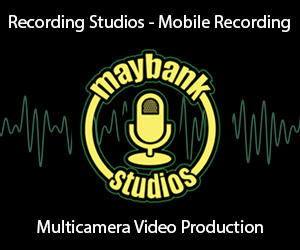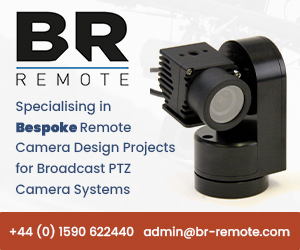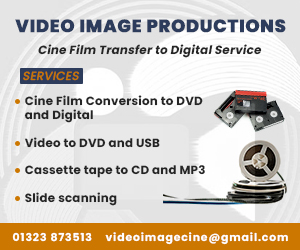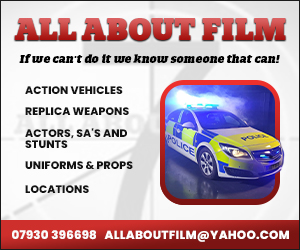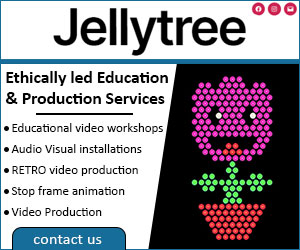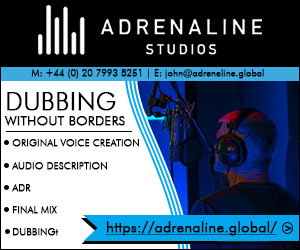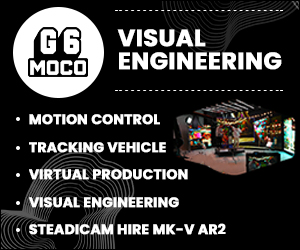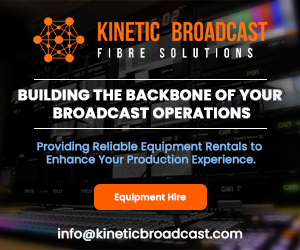Broadcast News
11/07/2014
EBU Measurement Method Makes LED Lighting Shine
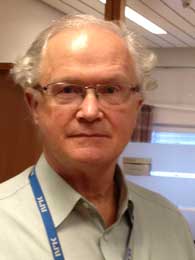
LED lighting first became interesting to those working in studio production because it offers enormous savings in terms of power requirements, as well as savings in size and weight. By Per Böhler, SMPTE Member and chair of the EBU's BHD-LED group.
If you consider a traditional studio with massive lighting systems based on incandescent lighting, you're looking at a system that demands hundreds of kilowatts of power, with 95 per cent of that power being converted to heat in the studio, which in turn requires use of a heavy-duty HVAC system for cooling. This is a very costly approach, particularly given how little power usage actually yields the light needed.
With LED technology, the situation is reversed; much more than 90 per cent of the energy put into such solutions is converted to light, and just a small amount is output as heat. Given their potential for enabling energy conservation and associated cost savings, high-power LEDs became a highly attractive solution for studio production lighting.
Users of LED lighting soon discovered that the properties of LED lights can create new issues, particularly with respect to colour reproduction. The quality can be very spiky, and many colours simply are not present in the light energy output. This causes an issue with cameras, which lack the capacity of the human eye to adapt on the fly to different types of lighting conditions and light energy outputs.
The practical upshot of this issue was that it became necessary to spend a lot of time in colour correction to fix colour reproduction issues, and this costly process cut into the cost savings that made LED lighting such an attractive idea in the first place.
Understanding this dilemma, the EBU BHD-LED group developed the Television Lighting Consistency Index 2012 (TLCI-2012) to address issues associated with the use of LED lighting in film and television production. The new index offers an alternative to the Colour Rendering Index (CRI), which long served as the only standardised metrology available for quantifying lighting quality for colour rendering, and the TLCI deals with many of the limitations that constrained effective use of the CRI in the television production environment.
Today, the EBU recommendation (R 137) outlining the TLCI can be paired with a free software package (provided by the EBU at https://tech.ebu.ch/publications) that runs on a standard PC and an inexpensive spectrometer to help users determine which LED studio lighting systems will best fit their needs.
Use of the software in conjunction with its accompanying guidelines can help prevent the need for expensive corrections in postproduction. The software uses the data output by the spectrometer to calculate a single figure that identifies the appropriate light source to use. This unique figure of merit then can be associated with LED light sources from any number of manufacturers, dramatically simplifying the process of evaluating and selecting LED light sources. The SMPTE 10E Lighting Consistency Drafting Group is using this work by the EBU to develop new standards related to LED lighting.
While the TLCI represents a valuable advance, one of its limitations is that it provides a unique descriptor for a single light source used alone in the production studio. In most cases, this is not the way in which light sources are employed. Rather, a mix of different sources is used, and this combination requires further measurement and assessment. Thus, the EBU developed and introduced a new television luminaire matching factor (TLMF) designed to enable comparison of two different light sources. With this information, users either can select and tune their lighting sources as best they can, or identify and employ a filter that enables much better matching of lighting sources.
Use of the TLCI and TLMF has proven to be a far more accurate method of attaining a high-precision representation of colour temperature than can be achieved using the colour temperature meters common today. More and more manufacturers are becoming aware of the TLCI and the TLMF, and they increasingly are incorporating such measurements into their own product sales and packaging materials. Having finished its work in developing these valuable tools for selecting and using LED lighting, members of the EBU project have moved on to establishing procedures that will enable lighting engineers to calibrate their own measurement spectrometers and evaluate new or existing light sources independently.
The extremely rapid development of better and better LED lighting products is driving interest and adoption of LED lighting in a broad array of applications beyond studio production, indeed in every possible application requiring artificial light sources.
As this interest grows, manufacturers continue to release new products to serve all of these areas, and major manufacturers have begun to take advantage of the TLCI to characterize not only LED lighting, but also light panels. Thus, the work newly completed by the EBU and now informing standards work at SMPTE already is providing a quick and accurate solution for measuring and understanding the quality of any light source for any application.
The R 137 recommendation and supporting documents (Tech 3353, 3354, and 3355), are available at tech.ebu.ch/publications
Read the article in BFV online.
(IT/JP)
If you consider a traditional studio with massive lighting systems based on incandescent lighting, you're looking at a system that demands hundreds of kilowatts of power, with 95 per cent of that power being converted to heat in the studio, which in turn requires use of a heavy-duty HVAC system for cooling. This is a very costly approach, particularly given how little power usage actually yields the light needed.
With LED technology, the situation is reversed; much more than 90 per cent of the energy put into such solutions is converted to light, and just a small amount is output as heat. Given their potential for enabling energy conservation and associated cost savings, high-power LEDs became a highly attractive solution for studio production lighting.
Users of LED lighting soon discovered that the properties of LED lights can create new issues, particularly with respect to colour reproduction. The quality can be very spiky, and many colours simply are not present in the light energy output. This causes an issue with cameras, which lack the capacity of the human eye to adapt on the fly to different types of lighting conditions and light energy outputs.
The practical upshot of this issue was that it became necessary to spend a lot of time in colour correction to fix colour reproduction issues, and this costly process cut into the cost savings that made LED lighting such an attractive idea in the first place.
Understanding this dilemma, the EBU BHD-LED group developed the Television Lighting Consistency Index 2012 (TLCI-2012) to address issues associated with the use of LED lighting in film and television production. The new index offers an alternative to the Colour Rendering Index (CRI), which long served as the only standardised metrology available for quantifying lighting quality for colour rendering, and the TLCI deals with many of the limitations that constrained effective use of the CRI in the television production environment.
Today, the EBU recommendation (R 137) outlining the TLCI can be paired with a free software package (provided by the EBU at https://tech.ebu.ch/publications) that runs on a standard PC and an inexpensive spectrometer to help users determine which LED studio lighting systems will best fit their needs.
Use of the software in conjunction with its accompanying guidelines can help prevent the need for expensive corrections in postproduction. The software uses the data output by the spectrometer to calculate a single figure that identifies the appropriate light source to use. This unique figure of merit then can be associated with LED light sources from any number of manufacturers, dramatically simplifying the process of evaluating and selecting LED light sources. The SMPTE 10E Lighting Consistency Drafting Group is using this work by the EBU to develop new standards related to LED lighting.
While the TLCI represents a valuable advance, one of its limitations is that it provides a unique descriptor for a single light source used alone in the production studio. In most cases, this is not the way in which light sources are employed. Rather, a mix of different sources is used, and this combination requires further measurement and assessment. Thus, the EBU developed and introduced a new television luminaire matching factor (TLMF) designed to enable comparison of two different light sources. With this information, users either can select and tune their lighting sources as best they can, or identify and employ a filter that enables much better matching of lighting sources.
Use of the TLCI and TLMF has proven to be a far more accurate method of attaining a high-precision representation of colour temperature than can be achieved using the colour temperature meters common today. More and more manufacturers are becoming aware of the TLCI and the TLMF, and they increasingly are incorporating such measurements into their own product sales and packaging materials. Having finished its work in developing these valuable tools for selecting and using LED lighting, members of the EBU project have moved on to establishing procedures that will enable lighting engineers to calibrate their own measurement spectrometers and evaluate new or existing light sources independently.
The extremely rapid development of better and better LED lighting products is driving interest and adoption of LED lighting in a broad array of applications beyond studio production, indeed in every possible application requiring artificial light sources.
As this interest grows, manufacturers continue to release new products to serve all of these areas, and major manufacturers have begun to take advantage of the TLCI to characterize not only LED lighting, but also light panels. Thus, the work newly completed by the EBU and now informing standards work at SMPTE already is providing a quick and accurate solution for measuring and understanding the quality of any light source for any application.
The R 137 recommendation and supporting documents (Tech 3353, 3354, and 3355), are available at tech.ebu.ch/publications
Read the article in BFV online.
(IT/JP)
Top Related Stories
Click here for the latest broadcast news stories.
12/10/2017
BB&S Lighting Adds New LED Lighting Fixtures
BB&S Lighting has announced the introduction of 3' and 4' Pipeline Free remote phosphor LED lighting fixtures. The 3' and 4' (914mm and 1,219mm) sizes
BB&S Lighting Adds New LED Lighting Fixtures
BB&S Lighting has announced the introduction of 3' and 4' Pipeline Free remote phosphor LED lighting fixtures. The 3' and 4' (914mm and 1,219mm) sizes
28/03/2007
A.C. Lighting Installs Lighting System At Motion Capture And Green Screen Studio
A.C. Lighting’s Special Projects division has supplied and installed the lighting system for Amersham & Wycombe College’s newly opened Motion Capture
A.C. Lighting Installs Lighting System At Motion Capture And Green Screen Studio
A.C. Lighting’s Special Projects division has supplied and installed the lighting system for Amersham & Wycombe College’s newly opened Motion Capture
24/06/2025
Brightline Lighting Delivers A Breakthrough In Low Voltage Lighting Control And Performance
Brightline Lighting introduces an all-in-one, low voltage control system for variable white lighting over a single DMX cable. Designed to provide seam
Brightline Lighting Delivers A Breakthrough In Low Voltage Lighting Control And Performance
Brightline Lighting introduces an all-in-one, low voltage control system for variable white lighting over a single DMX cable. Designed to provide seam
15/11/2019
Kinotehnik: Best In Class Lighting For Compact Lighting
We all know very well how reliant on lighting we are to capture images in all forms of filming and photography. Quite simply, without lighting, things
Kinotehnik: Best In Class Lighting For Compact Lighting
We all know very well how reliant on lighting we are to capture images in all forms of filming and photography. Quite simply, without lighting, things
09/11/2017
Cineo Lighting, NBCUniversal To Showcase Lighting Solutions
Cineo Lighting will co-exhibit with NBCUniversal at Live Design International (LDI) 2017 (Booth 2817), later this month when the show takes place at t
Cineo Lighting, NBCUniversal To Showcase Lighting Solutions
Cineo Lighting will co-exhibit with NBCUniversal at Live Design International (LDI) 2017 (Booth 2817), later this month when the show takes place at t
03/02/2004
Lighting and sound Lighting Logic specialists launched
Mick Cocker and Matt Miles have launched Lighting Logic Ltd, a lighting and sound sales, design and installation company. Based at Maidstone Studios i
Lighting and sound Lighting Logic specialists launched
Mick Cocker and Matt Miles have launched Lighting Logic Ltd, a lighting and sound sales, design and installation company. Based at Maidstone Studios i
08/11/2018
Rotolight Anova PRO 2 Revolutionises Studio LED Lighting In 2018
The Rotolight Anova PRO 2 is the latest innovation from Rotolight who offer a range of LED solutions for on-camera ENG, on location and in studio prod
Rotolight Anova PRO 2 Revolutionises Studio LED Lighting In 2018
The Rotolight Anova PRO 2 is the latest innovation from Rotolight who offer a range of LED solutions for on-camera ENG, on location and in studio prod
01/11/2010
BPS Orders Gekko Karesslite 6012 LED Studio Lighting
Gekko Technology has won an order for 200 Gekko dual colour temperature (tungsten and daylight white) karesslite 6012 luminaires from Broadcast & Prod
BPS Orders Gekko Karesslite 6012 LED Studio Lighting
Gekko Technology has won an order for 200 Gekko dual colour temperature (tungsten and daylight white) karesslite 6012 luminaires from Broadcast & Prod
05/09/2011
Kedo-Sk Single-Colour Focusable LED Hard-Source Comes To IBC
A new addition to Gekko Technology’s range of LED-based television and film production lighting systems is making its European show debut at IBC 2011.
Kedo-Sk Single-Colour Focusable LED Hard-Source Comes To IBC
A new addition to Gekko Technology’s range of LED-based television and film production lighting systems is making its European show debut at IBC 2011.
15/07/2014
Quality Of Lighting Becomes Ever More Crucial (Pt 2)
LED lighting is a huge technology milestone, just made for the workflow age: George Jarrett looks at the significant EBU development of TLCI, and talk
Quality Of Lighting Becomes Ever More Crucial (Pt 2)
LED lighting is a huge technology milestone, just made for the workflow age: George Jarrett looks at the significant EBU development of TLCI, and talk
13/10/2025
Brightline Lighting AV/720 Low Voltage Control And Flex-T LED Fixtures Create Eye-Catching Visuals
Professional podcasts are booming. They're an effective way to establish company executives as industry leaders, humanize a large organisation, drill
Brightline Lighting AV/720 Low Voltage Control And Flex-T LED Fixtures Create Eye-Catching Visuals
Professional podcasts are booming. They're an effective way to establish company executives as industry leaders, humanize a large organisation, drill
10/01/2018
LED Creative Deliver Lighting For The Price Is Right
LED Creative have supported the recently revamped game show The Price Is Right by supplying the lighting for scenic designer Chris Webster and lightin
LED Creative Deliver Lighting For The Price Is Right
LED Creative have supported the recently revamped game show The Price Is Right by supplying the lighting for scenic designer Chris Webster and lightin
13/12/2017
LED Lighting Finally Kills Off Tungsten & HMI
Astounding colour reproduction: George Jarrett witnesses perhaps the best product launch of the year as Rotolight demonstrates the Anova PRO 2. The BA
LED Lighting Finally Kills Off Tungsten & HMI
Astounding colour reproduction: George Jarrett witnesses perhaps the best product launch of the year as Rotolight demonstrates the Anova PRO 2. The BA
24/04/2017
Rotolight Announce AEOS LED Lighting Innovation
Rotolight has announced the launch of an industry-first location LED lighting innovation, AEOS. Designed for portrait photographers and videographers
Rotolight Announce AEOS LED Lighting Innovation
Rotolight has announced the launch of an industry-first location LED lighting innovation, AEOS. Designed for portrait photographers and videographers
04/10/2016
Rotolight Chosen As Exclusive LED Lighting Supplier To Celebro Media Studios
Rotolight has been selected as the exclusive LED lighting supplier to Celebro Media Studios. Celebro Media Studios was specifically designed for live
Rotolight Chosen As Exclusive LED Lighting Supplier To Celebro Media Studios
Rotolight has been selected as the exclusive LED lighting supplier to Celebro Media Studios. Celebro Media Studios was specifically designed for live





